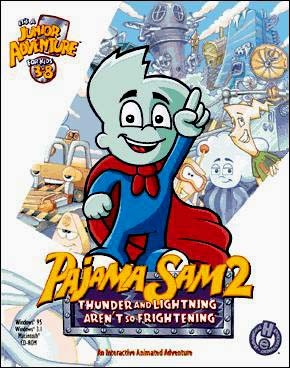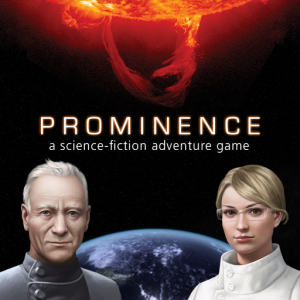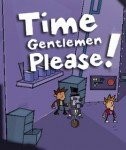Pajama Sam 2: Thunder and Lightning Aren’t so Frightening flashback review

Note: Though the article content is the same, reviews of Pajama Sam 3 and Pajama Sam 4 have been published separately with their own individual ratings.
Adventure games cover a broad spectrum, from text to 2D to 3D, from the serious to the comedic, from mind-melting puzzle-fests to story-centric endeavours. With such a wide variety available, it’s curious then that adventures for younger players remain underrepresented. This was problematic for me, as I wanted to introduce my two young nephews (ages 4 and 7) to the joys of adventure games. Fortunately, I found that Humongous Entertainment’s venerable Pajama Sam games are every bit as suitable for young gamers today as they were back when they were originally released near the turn of the century. Targeting children ages 3-8, there’s even enough meat on the bones of these 2D point-and-click adventures to provide a nice light snack for adults sharing in the experience. Having previously covered the series debut, No Need to Hide When it’s Dark Outside, this review focuses on the remaining three adventures, highlighting their similarities and differences in comparison to one another.
Players control the titular blue-coloured boy whose idol is the superhero cartoon character Pajama Man. Each game starts with a brief tutorial section where Sam has to locate his red cape before finding his way through the house and off to a fantastical new adventure. The formula is largely similar, but each game involves its own particular focus. Pajama Sam 2: Thunder and Lightning Aren’t so Frightening has mild environmental themes, showing, for example, that rainstorms are necessary for crops to grow. In Pajama Sam 3: You Are What You Eat From Your Head To Your Feet, the importance of well-balanced nutrition is touched upon and even used to show tolerance of diversity. The series is capped off with Pajama Sam 4: Life is Rough When You Lose Your Stuff!, which is perhaps the weakest thematically as it speaks to taking care of one’s physical possessions – although for anyone around kids who break their toys, this may be an important message indeed. In all cases, the topical material is subtly woven in and never presented in an overbearing way.
Once properly equipped with his cape, Sam is ready to venture into the different fantasy world that awaits in each game. In Pajama Sam 2, he climbs through the attic to the World Wide Weather bureau located in the clouds above. Pajama Sam 3 sees him sneaking through the pantry into a land of food where he is promptly imprisoned and has to escape. Finally, in Pajama Sam 4 Sam is excited to learn that his hero is signing autographs at the local mall. He races to his room to retrieve his copy of the first-issue Pajama Man comic book, only to see it sucked into a pile of clothes, toys, and other detritus that he’s allowed to accumulate. Naturally, Sam follows the comic into another world based on the mess of his own room.
It is here that the respective worlds open significantly, with paths winding through the different cartoon locales. A good chunk of play time is spent exploring and finding areas where puzzles need to be solved, as well as the items needed to solve them. While the locations in all the Pajama Sam adventures are varied and interesting, younger children might be a bit overwhelmed by the sheer number of places and lack of direction at first, but experimentation is encouraged as there are no penalties for wrong choices.
While exploring the environs, Sam will eventually be tasked with completing three or four similar overarching goals. In Pajama Sam 2, he must find four anthropomorphic machine parts to fix various weather machines. Pajama Sam 3 tasks him with rescuing four food group delegates so they may attend the peace talks going on at the Food Pyramid. In Pajama Sam 4 he is again collecting items, this time searching for socks, shoes and a shirt to gain entry into the Grubby Corners Mall.
In Pajama Sam 2 and 3, the main goals comprise the entirety of the stories. Once Sam has restored the weather machine parts or saved the food delegates, an ending cut scene plays to finish off the adventure. The finale of Pajama Sam 2 is quite satisfying, with Mother Nature herself making an appearance. Pajama Sam 3’s ending results in the different food groups coming to terms with one another. While this does complete the story with a commendable lesson, the ending feels rushed and not as rewarding as its predecessor.
Pajama Sam 4 changes the pattern where the ending is concerned. Instead of finishing once the main goals are complete and access to the mall is gained, a final playable sequence is introduced. It’s a nice surprise just as it seems the experience is over, as it keeps the fun of the Pajama Sam world going a little longer. This sequence is not simply tacked on to extend gameplay, either, but builds to a nice conclusion in its own right.
The puzzles in this series tend towards the easier side, which is appropriate given the target audience. Most obstacles are fair and logical, generally requiring thorough exploration to find a needed inventory item. The design of Pajama Sam 4 suffers to a degree, however, as it has a number of stereotypical “adventure game-y” puzzles in it. One such challenge, involving an ice cube and a stuck lollipop, even has Sam explain why the solution worked. Another puzzle has the protagonist triggering a fire suppression water sprinkler system in order to clean the dirt off of himself. While he does say that he wouldn’t encourage his friends to do this, it is a moment that seems quite out of character for the otherwise polite, helpful, kind and responsible role model that Sam provides for children.
The Pajama Sam games are not long, each clocking in at just under two hours each for myself. My nephews completed Pajama Sam 2, with a little bit of help from their parents, in about three hours. This length feels right for the target audience, neither too long to bore children nor too difficult to discourage them. Play time can be increased in Pajama Sam 2 and 3, however, thanks to their replayability. Every time you start a new game, different puzzles are selected. In Pajama Sam 2 this selection is random, while in Pajama Sam 3 you can explicitly choose particular puzzles from the options menu, giving you more than just an arbitrary chance to get a different experience the next time around.
While the end goals are always the same in both games, the tasks along the way have a great deal of variation. For example, in Pajama Sam 2 one objective involves finding a lost machine part with a homing device of sorts. The first time through this part might simply be located in a room full of boxes and can be immediately picked up once detected. In another playthrough, the part might be hidden in a high vent in another room, requiring Sam to use a crane to reorganize stacks of crates to form stairs up to the vent. Along with the changes in puzzles, many of the characters Sam encounters will also say different things. When they do repeat things you’ve heard before, a quick keystroke will skip over the unnecessary dialogue.
These random puzzles add a good degree of replay value, although they can sometimes be a bit confusing initially, as you may encounter locations that seem like they should have something to do in them but don’t, simply because the puzzles for those scenes have not been triggered that particular time. Pajama Sam 3 does a better job of not having as many of these excess scenes. Pajama Sam 4, meanwhile, differs from the other games entirely in that it does not provide any random puzzles at all and so offers no real incentive to play again.
While wandering about looking for puzzles and inventory items, it is also useful to keep an eye out for the scavenger hunt objects lying around in each game. Pajama Sam 2’s are jigsaw puzzle pieces that can be assembled as a bonus activity that has nothing to do with the rest of the game. In Pajama Sam 3, it’s cookie box tops that can be traded in for a Pajama Man action figure, which I never did manage to unlock. Pajama Sam 4 features a collection of Pajama Man trading cards that can be printed right from the game to form a larger poster once all of them are collected. These trading cards are an oddity in the series, in that they contain some of the only text that Sam does not speak aloud. Sam even reads the labels on the menu options! Very young players will need someone to read the cards to them once discovered.
The Pajama Sam series also includes the occasional mini-game. Pajama Sam 2 has an optional challenge allowing Sam to search the countryside with a pair of binoculars looking for his hero’s scattered comic books hidden behind bushes, in trees, and the like. One of the tasks in Pajama Sam 3 involves determining which of a group of identical looking beans needs to be selected. This is done via a sorting machine containing several teeter-totter-esque planks that need to be tipped the right way to direct the correct beans into the appropriate hopper at the bottom. Pajama Sam 4 slides into completely casual territory with a required match-3 game that plays like Candy Crush. Here various types of garbage are shown in a grid, and by swapping two items at a time you must form lines of three or more of the same type to remove them. This translates into eliminating a large mound of garbage within the game world itself, which is necessary for Sam to continue on his quest. Whether optional or required, these mini-games aren’t overly challenging and add some nice variety to the proceedings.
Visually, the series as a whole is a treat. Locations are interesting and lively to look at, from the constantly whirring machines of the World Wide Weather bureau to the snow-swept slopes of a ski run to a farm dotted with dust bunnies (actual bunnies covered in dust). Promoting the curiosity to try everything, most locations have a collection of random hotspots that can be clicked to trigger funny background animations, like burgers falling from the sky, flags changing colour, or flying saucers buzzing by. These animations are quite numerous in Pajama Sam 2 and 3, although their number is disappointingly reduced in Pajama Sam 4.
Characters are also uniquely designed and nicely animated. Most are inanimate objects come to life, such as the revolutionary carrot with a taste for economics, the donut who wants to bob down rivers as an inner tube, or the sponge who lives to eat mold. Frequently, full-screen close-up animations are presented when important tasks are completed, with Pajama Sam 3 having the most such displays. Sam is the most animated character overall, as he bounds, jumps, flips and sprints through the different locations. Here again, the intricacy of these animations is reduced in Pajama Sam 4. This makes traversing the environments a bit faster, but the experience does lose some of the charm of the earlier games as a result. On the plus side, Pajama Sam 4 benefits from smoother line work in its animations rather than the more pixelated look of the previous entries.
The worlds of Pajama Sam provide a fun soundscape as well. All these animations are punctuated with sound effects that would not be out of place in old Bugs Bunny or Road Runner cartoons, and the action is backed by lively, though never distracting, synth scores. Pajama Sam 4 even goes so far as to have a full-blown musical number, which can be replayed from the options menu at any time after first being encountered.
The excellent audio experience extends to the voice work for each character. While they may be “just” cartoons, they all have distinct personalities and are skillfully performed. Sam in particular is a fun protagonist to be around, at times frightened, brave, apologetic, helpful and excited. In the earlier games he is voiced by Pamela Adlon. For the fourth game Sam is voiced by Elisha Ferguson, who capably mimics Ms. Adlon’s delivery such that the difference is not particularly noticeable.
Of the three games, I enjoyed Pajama Sam 2 the most. With a good variety of puzzles, the liveliest animations and a satisfying conclusion, it provides the most solid all-around experience. Even with its limitations, Pajama Sam 4 is the next strongest entry. The lack of replayability and reduced attention to animation are disappointing in comparison to the other two games, but wouldn’t have been especially conspicuous had this been a standalone game with no prior expectations. While I would place Pajama Sam 3 last due to its reduced puzzle variety and a less satisfying ending, even a comparatively weaker Pajama Sam game is still an entertaining affair.
As cartoon productions, the Pajama Sam games have aged remarkably well, making them a wonderful introduction to point-and-click adventures for their young target audience almost twenty years after they were originally launched. Sam is fun to spend time with and is a good role model, being thoughtful and generous without being overly preachy. The colourful locations and numerous animations will help hold the attention of young kids and the challenges are, for the most part, fair and rewarding for any child in your life. And when they’re done with them, these are games that even an older player whose inner child is still alive and well may just find enjoyable to breeze through too. Now, if I could just find that last box top…






























